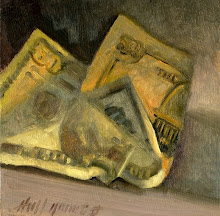Professor Groat
Color Theorist Research Project
Due Date: December 4
You are to investigate a historically significant color theorist, and then present your research through an Internet “blog” at www.blogger.com
Objective:
The objective is for students to teach people globally about the origin of modern day color theory.
Research Criteria:
- At least 15 images / charts posted on blog that illustrate both the social context and seminal color theory research.
- Each image and posting must include a brief description relating to the significance of the image.
- Images and charts can be obtained both from the Internet and created.
Components of Research:
- A brief biographical sketch of the color theorist, including names, dates, ethnicity, etc.
- An overview of what the color theory or theories specifically involved.
- An outline of how the new color theory or theories impacted existing viewpoints on color.
- A synopsis of the social context that the theorist worked within.
- References to other color theorists that they may have collaborated with or influenced.
- Research that the theorists may have been involved with that was unrelated to the scientific study of color.
- Your own observations on how the theory both impacted and has been implemented within the technological world of today.
- A presentation of charts / graphics that support the research.
- Unique discoveries or theories that you have made that are not outlined.
Color Theorist Selections:
- Leonardo Da Vinci (1475-1564)
- Leone Battista Alberti (1404-1472)
- Issac Newton (1642-1727)
- Jacques Chrisophe le Blon (1667-1742)
- Joann Wolfgang con Goethe (1749-1832)
- Philip Otto Runge (1777-1810)
- Michel Euge’ne Chevreul (1786-1889)
- Ogden Rood (1831-1902)
- James Clerk Maxwell (1831-1879)
- Albert Munsell (1858-1918)
- Moses Harris (1731-1785)
- Ewald Hering (1834-1918)
- Wilhelm Ostwald (1853-1932)
- Joseph Albers (1888-1976)
Websites to Study:
http://en.wikipedia.org/wiki/Color_theory
Leone Battista Alberti (c.1435)
Leonardo da Vinci (c.1490)
Isaac Newton's theory of color (Opticks, 1704)
the Theory of Colors (1810) by the German poet and government minister
The Law of Simultaneous Color Contrast (1839)
by the French industrial chemist Michel Eugène Chevreul.
Albert Munsell (Munsell Book of Color, 1915
